Features of breeding thorns
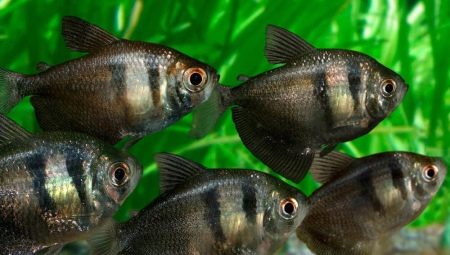
The thorns are peaceful fish, they look beautiful in the aquarium, especially the colored breeds. The lifespan is short - 3-5 years, so many breeders try to breed thorns at home, and they succeed quite well. These aquarium fish reproduce well. When the necessary conditions are created, females spawn, from which tiny fry are born.
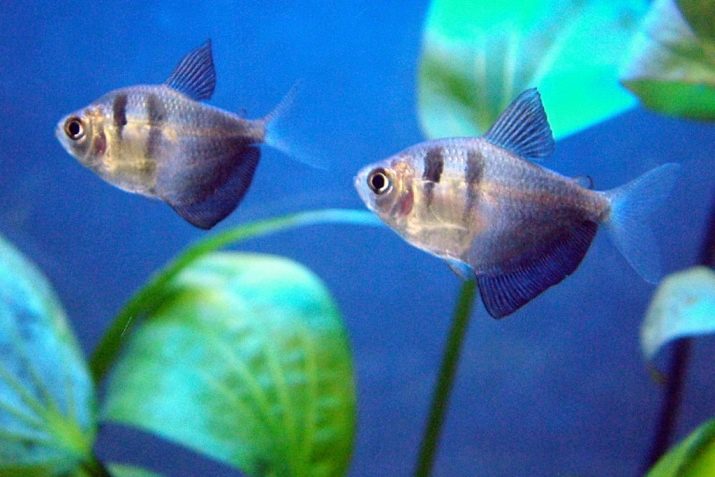
Nuances of the breed
In the usual thorns, the color of the body is olive-gray, there are two black stripes from the back to the stomach, the tail area and fins are dark. But there are also artificially bred breeds with bright colors: yellow, green, purple, orange, crimson and blue belly. Such a fish looks gorgeous in an aquarium, but not always during reproduction it is possible to get the same beautiful fry. The fact is that there are two types of colored thorns:
- thorny caramelcolored with special injections;
- thorny glofish Are genetically modified fish, the DNA structure of which included genes for luminous jellyfish and corals.
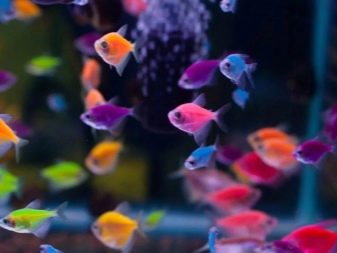

Glofish fry completely adopt the color of their parents, in contrast to caramels, in which the offspring is born colorless. That's why if you plan not only the content of thorns, but also their breeding, then it is better to acquire the glofish breed. They differ from caramels in a more intense and uniform color. Of course, in the litter of glofish, several fry may be colorless, but the main percentage of babies will still take the color of their parents.
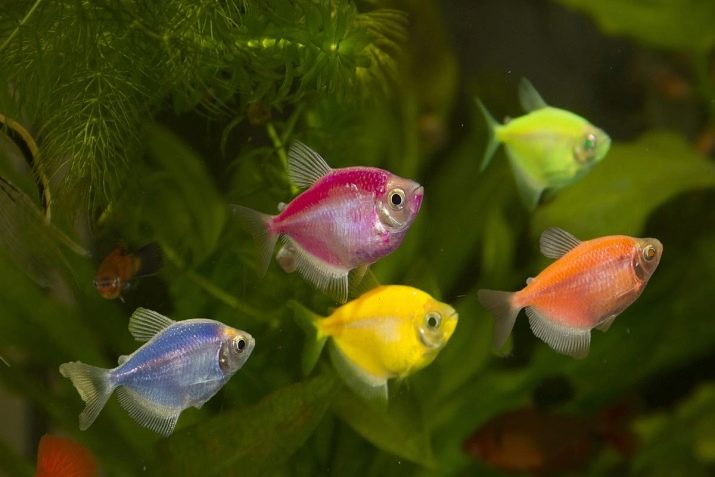
How to determine the sex of a fish?
In thorns, sexual characteristics are poorly expressed, but you can distinguish a male from a female:
- the dorsal fin of the male is pointed, and that of the female is rounded;
- the anal fin of females is wider than that of males;
- females are larger and more bellied.
Sex differences are clearly manifested when the fish reaches 7 months.
For spawning, individuals are selected from the age of 8 months to 2 years. The fish should be at least 3-5 cm long. For successful reproduction, it is necessary to plant one female and two males or two females and three males in a separate tank.

Arrangement of spawning grounds
The spawn is prepared in advance; a container with a volume of at least 20 liters is suitable for its arrangement. The water should be soft and warm. The temperature is within + 24 ... 28 degrees Celsius, and the hardness is 5-10 units. Melted, rain or boiled water is used to soften the water, and a heater is used to raise the temperature. To avoid stress when transferring to a new environment, some of the water can be taken from the aquarium. The tank must be supplied with an aeration system, but additional light is not needed.
Thornsia thrive in natural daylight. The aquarium is located in a quiet location, away from bright sunlight.
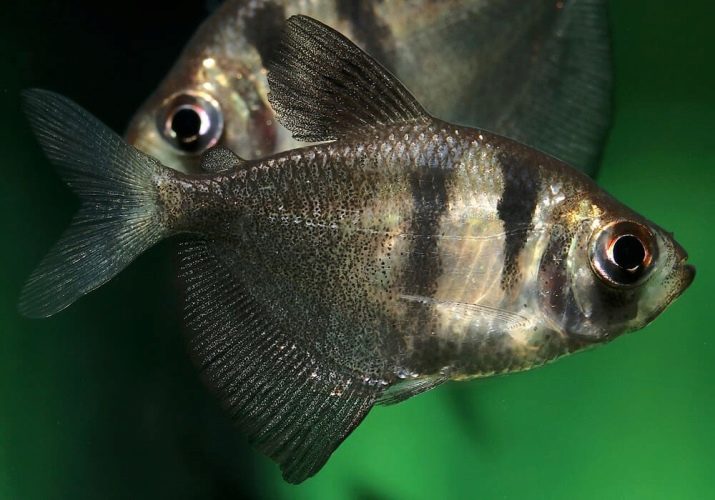
To protect caviar the bottom is covered javanese moss. Its dense thickets will protect future offspring from hungry parents. But this does not guarantee one hundred percent safety of the eggs. Therefore, for more reliable protection a separator mesh is installed, it is placed just above the bottom, about 2 cm. Eggs will slip into the cells and, thus, will become inaccessible to adults. For greater stability of the structure, you can put a couple of large stones under the mesh.
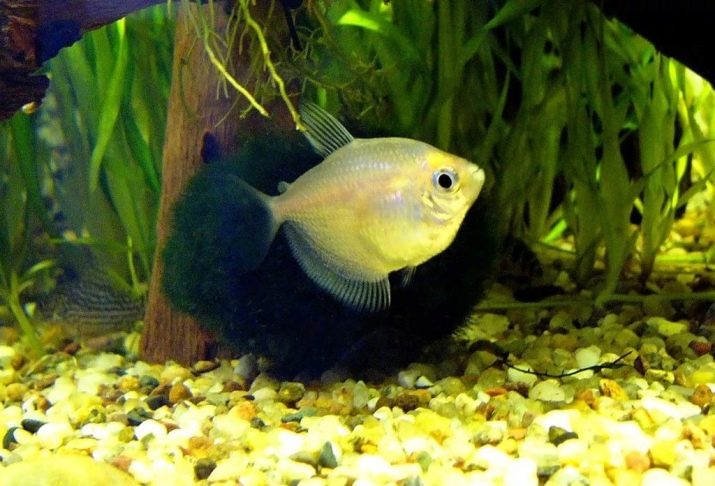
Breeding preparation and spawning
In order to stimulate spawning, the water temperature in the general aquarium is raised by 2-3 degrees, and the fish are hungry for a day: they do not give any food during the day. The next day they are well fed with quality live food. Most of all, a bloodworm or koretra is suitable, these delicacies will give strength and tune in to "love games".
For breeding, the largest and pot-bellied female and the brightest males are chosen. Fish should be active and mobile.
In the spawning grounds, thorns are launched in the evening, and in the morning, most often, "courtship" already begins. But sometimes the fish need more time to adapt to a new space, and spawning begins only after a week.
That's why do not be upset if the fish did not spawn right away, perhaps they are still settling in. Every day, fish in the spawning grounds continue to be fed with bloodworms or other live food, and the water indicators are monitored. Particles of uneaten food must be removed, otherwise they will rot and poison the aquatic environment with harmful substances. This can discourage the fish from breeding.

If spawning does not occur within two weeks, then for some time males and females are separated from each other. And then they reconnect, doing all of the above. The most common reasons why fish do not breed are:
- cold or hard water in the spawning grounds;
- the conditions in the spawning grounds are very different from those in the general aquarium;
- poor condition of the fish, exhaustion and illness;
- strong knocking, stomping and loud music, as well as the owner's excessive attention to aquatic pets;
- unsuitable age of thorns, some individuals stop spawning at the age of two years.
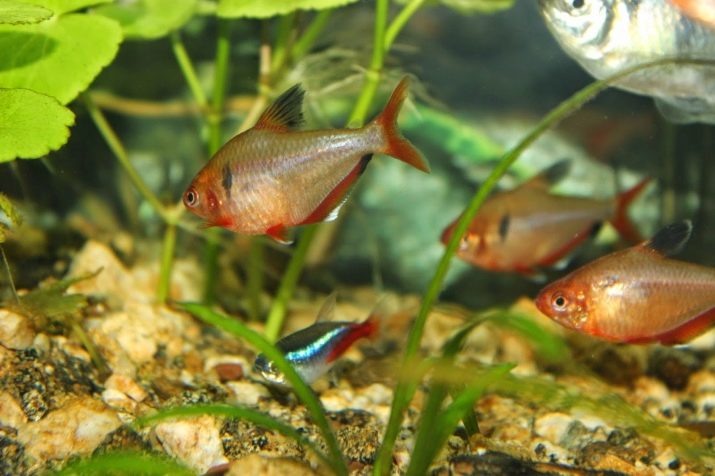
During spawning, males chase the female around the entire aquarium, circle around her and press their belly against her. In the process of these "love games", the female lays eggs in small portions, which the males immediately fertilize. Caviar settles on the bottom or on the leaves of plants. The whole process can take 2 to 3 hours. At one time, the female is able to lay about 1000 eggs, but not all of them will be viable.
After the completion of spawning, adults are immediately transferred to a common aquarium. In the spawning box, replace a quarter of the water with fresh water and add a bactericidal solution - methylene blue. This is an excellent tool for preventing the development of fungus and infection of the reservoir with parasites, which can kill young animals.
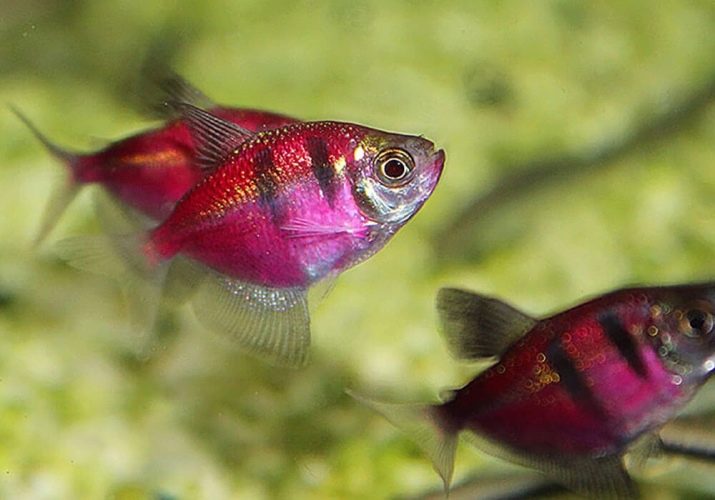
Growing fry
After about a day, larvae emerge from the eggs, which hang on glass and plant leaves. And after another 4 days fry appear, at this moment you can add several snails, they will keep the aquarium clean. Babies are fed live dust 4 times a day: the solution with infusoria is dripped with a pipette or syringe directly into the water with fry. Other small feeds such as brine shrimp nauplii or specialized dry feed for fry can be fed.

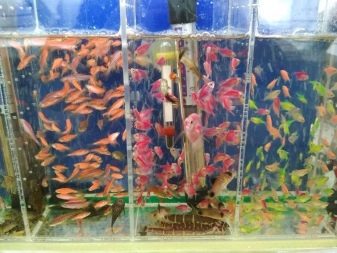
In order for the fry to grow quickly and well, the aquarium must be well lit, and the water in it must be perfectly clean.
During the first two weeks, a daily change of ¼ part of the water is required. Fish grow unevenly and the stronger ones can eat the weaker ones. Therefore, adolescents are sorted, large ones are deposited in a separate container. For this reason, for breeding thorns 2-3 additional tanks are required. When the fry grows up and gets stronger, it can be transplanted into a common aquarium.

In the next video you can watch the growth of GloFish thorn fry.








